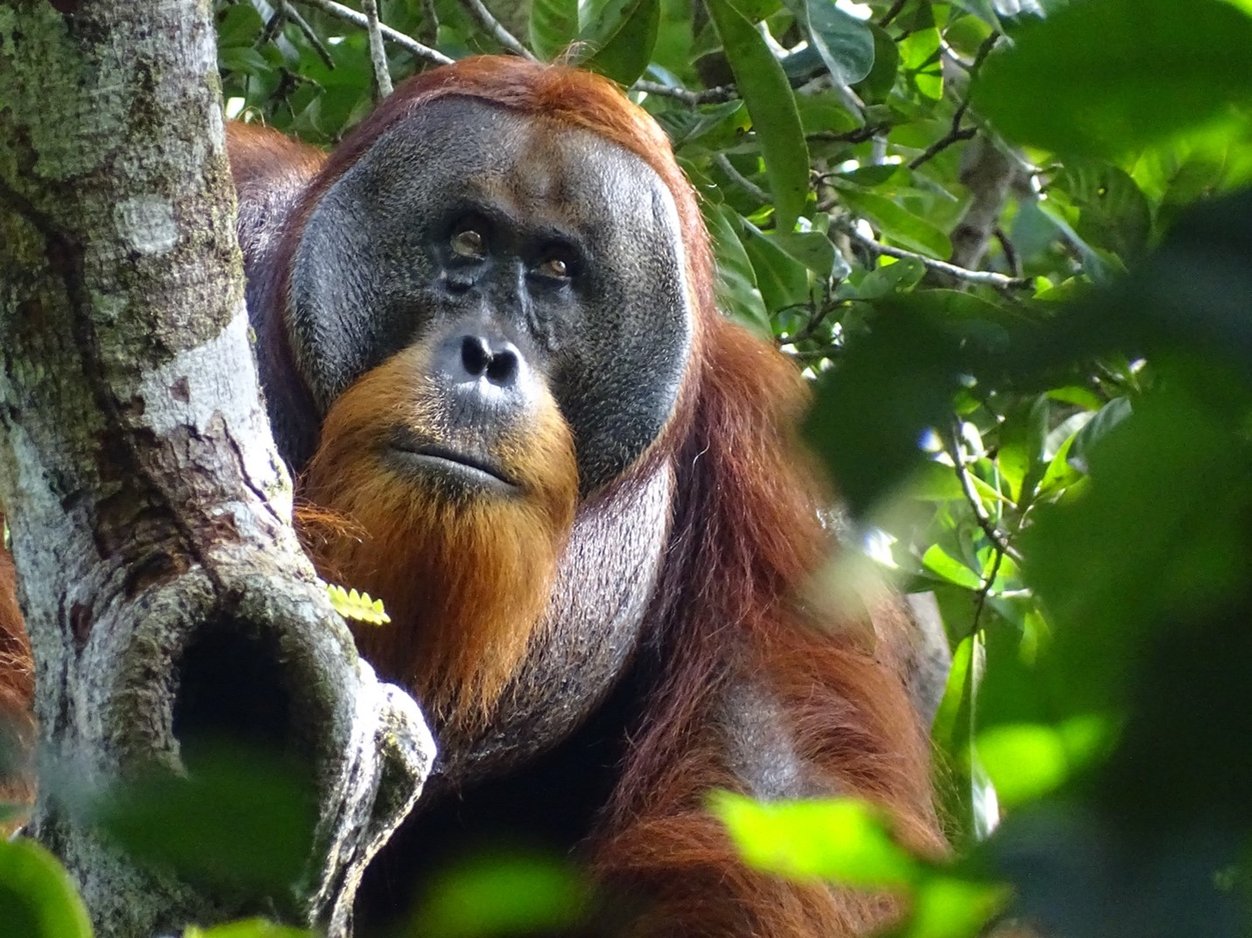in the wild
A Sumatran orangutan used medicinal leaves to heal his face wound

Safruddin
Orangutans, they're just like us: Sometimes, they get injured, and then treat their wounds. Or at least that's what Rakus, an adult male Sumatran orangutan, was observed doing in the summer of 2022. After acquiring a face wound, likely in a mating fight, he picked some leaves of Akar Kuning, a vine known to have medical properties, and applied its juice and leaves to his face. A couple of days later, the wound had healed.
This is the first time researchers have documented an animal using a medically active substance to treat a wound, pointing to commonalities between humans and other great apes. "There are many, many unexamined assumptions about our uniqueness," said B. Natterson-Horowitz, who researches the connections between animal and human health. "What this paper does, is it begins to peel back that blindfold." I wrote about it here.
policy
Direct care workers could soon see a bump in wages
Despite industry opposition, the Centers for Medicare and Medicaid Services will boost wages for people who provide in-home and community-based care for older adults and people with disabilities. A new rule will bring sweeping changes to the health care industry: Eighty percent of Medicaid payment reimbursements for certain services will now go directly to care worker wages.
Home and community-based services organizations say the new policy is "misguided" and likely to bankrupt providers. But something needs to be done: The Covid-19 pandemic, skyrocketing home health care costs, and rising wages in other industries hollowed out the direct support workforce. Over 7 million seniors and disabled people rely on these services, but nearly 80% of providers reported that they turned away new referrals last year due to staffing shortages. Read more about the new rule and why industry leaders aren't thrilled from STAT's Timmy Broderick.
research
Families request supportive resources more without pre-screening
Health care providers typically use risk-based screening to match childrens' caregivers with the resources they may need. The idea is to fill families' needs for food, shelter, and other critical support systems. But screening could end up exacerbating inequalities if families are forced to disclose their hardship to meet specific thresholds of need.
A new study from the Children's Hospital of Philadelphia, to be presented at the Pediatric Academic Societies Meeting on May 4, sought to establish whether screening helps or hurts. Researchers randomly assigned 4,000 caregivers to receive social resource information from a full list, or a more limited list after a standardized screening. Those who got the full resource menu were 9% more likely to request any of the resources than those who faced the standardized screening. The increase was even bigger for families of primarily non-English speakers.
No comments